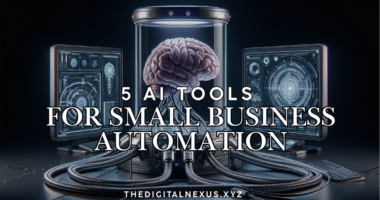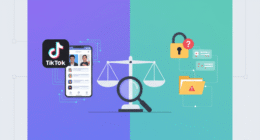Artificial intelligence, or AI, is a term that’s everywhere—from blockbuster movies to the settings on your smartphone. But despite its constant presence, many people find themselves asking a simple question: what exactly is the AI technology meaning? Is it about sentient robots, or is it something more practical and present in our lives today? The truth is, it’s a bit of both, but far more of the latter.
This guide is designed to demystify AI. We’ll break down the core concepts in simple, conversational terms, show you how you’re already using it every day, and explore its growing role in shaping our world. By the end, you’ll have a clear understanding of what AI is and why it matters.
The Core Definition: What is AI Technology?
At its heart, the AI technology meaning refers to the simulation of human intelligence in machines that are programmed to think, learn, and problem-solve like humans. Instead of just following explicit instructions (like a simple calculator), AI systems can analyze vast amounts of data, recognize patterns, and make decisions or predictions based on that information. Think of it less like a machine that’s “alive” and more like a highly advanced tool designed to extend our own cognitive abilities.
According to the Stanford Institute for Human-Centered AI, AI is a broad field with many different approaches, but the central goal remains the same: to create systems capable of performing tasks that typically require human intelligence.
Breaking It Down: The Brains Behind AI
AI isn’t a single technology but an umbrella term that covers several powerful subfields. Here are the three most important ones to know:
- Machine Learning (ML): This is the most common form of AI today. Machine Learning allows computers to learn from data without being explicitly programmed for every single task. It’s like showing a child thousands of pictures of cats until they can recognize a cat on their own. Your email’s spam filter is a perfect example—it learns to identify junk mail by analyzing patterns from millions of emails.
- Deep Learning: A more advanced subset of ML, deep learning uses complex structures called “neural networks,” which are inspired by the human brain. This allows it to learn from enormous datasets and handle more complex tasks, like recognizing faces in photos, understanding medical images, or powering self-driving cars.
- Natural Language Processing (NLP): This branch of AI gives machines the ability to understand, interpret, and generate human language. Every time you talk to Siri, Alexa, or Google Assistant, you’re interacting with NLP. It’s what allows them to understand your questions and provide coherent answers.
AI in Plain Sight: You Use It More Than You Think
The true AI technology meaning becomes clearest when you see it in action. You don’t have to look far—you’re likely using it every day:
- Entertainment: Netflix and Spotify use AI to analyze your viewing and listening habits to recommend new shows, movies, and songs you might like.
- Navigation: Google Maps and Waze use AI to analyze real-time traffic data, predict congestion, and find the fastest route to your destination.
- Online Shopping: Amazon’s recommendation engine suggests products based on your browsing history and past purchases, a classic use of machine learning.
- Communication: Features like “Smart Reply” in Gmail, which suggest quick responses to emails, are powered by AI analyzing the content of the message.
How AI is Shaping Our World
Beyond personal convenience, AI is a transformative force across major industries. Understanding the modern AI technology meaning involves seeing its large-scale impact. It is making processes more efficient, creating new possibilities, and solving complex problems.
In business, for example, AI is being used for everything from automating customer service with chatbots to optimizing supply chains. As we explored in our guide on how AI improves sales prospecting, these tools help teams identify the best leads and personalize their outreach, leading to better results. This widespread adoption is why a recent McKinsey report highlights AI as a major driver of economic growth. In education, AI is creating personalized learning programs that adapt to each student’s pace and style, making education more effective and accessible.
Your Journey into AI Starts Here
Understanding the AI technology meaning is the first step into a larger, fascinating world. It’s not just about futuristic robots; it’s about powerful tools that are already augmenting human potential and changing the way we live and work.
Want to dive deeper into AI? Explore our beginner-friendly guides and start your journey into artificial intelligence today.







